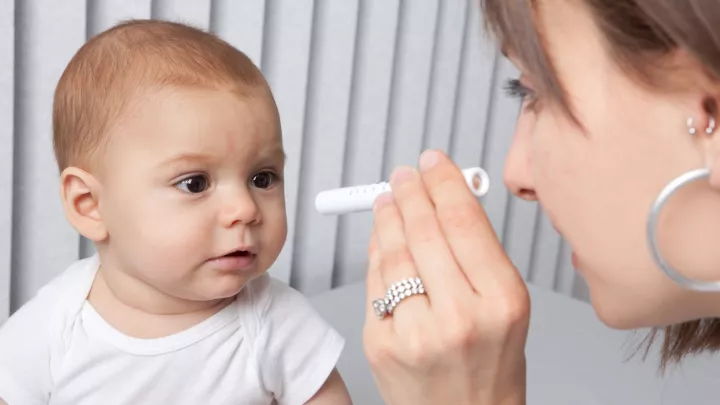Liquid Biopsy for Retinoblastoma Diagnosis
Liquid biopsy for retinoblastoma is an innovative technique used to detect childhood eye cancer sooner. Experts at Children’s Hospital Los Angeles pioneered this new diagnostic test.
Liquid biopsy provides a safe way to get detailed genetic information about the cancer cells. Retinoblastoma can grow quickly, so a fast and accurate diagnosis gives your child the best chance of a positive outcome.
What Is a Liquid Biopsy for Retinoblastoma in Children?
A liquid biopsy tests a sample of fluid taken from the body to look for cancer markers. For a liquid biopsy for retinoblastoma, we collect a small sample of fluid from the front of your child’s eye (aqueous humor). The information we learn from that sample helps us provide a prognosis (outlook) and individualized treatment plan for each patient and each eye.
How Does a Liquid Biopsy Detect Retinoblastoma?
We use sequencing techniques to look for cancer markers in a sample of fluid taken from the aqueous humor. The test detects changes in the number of copies of a chromosome, gene fusions and gene mutations that commonly occur in pediatric tumors.
CHLA researchers have also found that some markers in the aqueous humor might indicate more severe disease.
What to Expect During a Liquid Biopsy for Childhood Eye Cancer
Our pediatric anesthesiologist places your child under sedation for the liquid biopsy. Once your child is asleep, an eye specialist uses a needle to remove a tiny sample of fluid from the front of your child’s eye.
While your child is under anesthesia, we also perform imaging and blood tests. These measures help us identify any associated genetic mutation and understand the physical impact of the tumor on the eye structure.
Liquid Biopsy for Retinoblastoma Versus Traditional Methods
A liquid biopsy of the eye fluid offers a safe way to identify the molecular characteristics of childhood eye tumors.
For most cancers, a biopsy (removing a small sample of tissue) is the gold standard for diagnosis. However, biopsies were not previously used for retinoblastoma because there was no safe way to biopsy the eye. Taking a biopsy of an eye tumor risked damaging the eye and spreading cancer cells beyond the eye. A liquid biopsy of the eye fluid does not have those risks.
Existing methods for diagnosing retinoblastoma include eye exams, blood tests and imaging tests. Imaging tests can detect a tumor and show its size, but they don’t provide details about the genetic makeup of the tumor. Blood tests can identify inherited forms of retinoblastoma caused by changes in the RB1 gene, but do not detect other forms.
Where to Get a Liquid Biopsy for Retinoblastoma
Children’s Hospital Los Angeles was the first center to perform liquid biopsies for childhood eye cancer. Dr. Jesse Berry, director of the Retinoblastoma Program at CHLA, is leading a trial of liquid biopsies for retinoblastoma at 18 locations internationally. The National Cancer Institute (NCI) of the National Institutes of Health (NIH) funded the trial.
Expert Retinoblastoma Care at Children’s Hospital Los Angeles
We offer leading-edge tests and treatments for childhood eye cancer. Learn more about how your child can benefit from our Retinoblastoma Program.
Contact us
To schedule an appointment at the Vision Center, call 323-361-2347.


